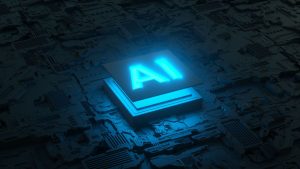Twenty years ago, the Internet was just beginning to emerge. This is when artificial intelligence, a completely new technology, emerged. Artificial intelligence is a set of technologies that simulate human intelligence. Artificial intelligence has many potential applications. It can be used in data processing, the medical field, as well as the control of autonomous cars and monitoring cyber security. The development and operation of the internet are also influenced by artificial intelligence. Artificial intelligence will be defined in this article, as well as its scope on the web.
What’s artificial intelligence?
Alain Turing, a mathematician, invented the first “intelligent” program in 1950. It was designed to equip all computers with binary logic. This is the foundation of modern computers’ functioning today. Artificial intelligence, as we know it today, aims to allow machines to mimic human intelligence to produce reasoning and learning. There are three types of artificial intelligence:
A narrow form of artificial intelligence (NIA) that allows machines to make individual decisions;
General Artificial Intelligence, which imitates human cognitive abilities;
A future technology that surpasses human intelligence is called super artificial intelligence (SAI).
Artificial intelligence is becoming more prevalent in our lives. It governs some aspects of our daily habits and influences our behaviour, even though we don’t always realize it. Artificial intelligence is a mechanism that models and controls the functioning of the internet. This is evident to those who spend hours on their smartphones or computer screens every day.
AI applications on the web
Artificial Intelligence has played an important role in the development of the web. It continues to play a significant role in the day-to-day functioning of the web. So significant that AI events have been created to talk about AI and all its aspects.
AI and the development of the web
Websites have changed a lot since 1993, when the first web browser, Mosaic, was created. They are now much more user-friendly and attractive. Websites are no longer digital showrooms for brands. They can now offer customized content, take into account the preferences of customers and encourage them to purchase. This transformation is in large part due to artificial intelligence.
Artificial intelligence can first correct website flaws by making them more user-friendly and functional. It relies on the user’s browsing habits to achieve this.
Artificial intelligence automatically eliminates pages that are not frequently visited, highlights products and makes the website more efficient. This improves user experience.
Artificial intelligence can create personalized content based on the consumer’s preferences. Artificial intelligence takes into account consumers’ preferences, buying habits, and needs to recommend products that might lead to a purchase. This is true for many shopping apps, like the Facebook Marketplace. The algorithm analyzes your past purchases and suggests new products to purchase.
Artificial intelligence is a major contributor to the development and implementation of voice search and visual assistants. Artificial intelligence is also useful in helping web developers create content that caters to customers’ needs by collecting consumer preferences and needs.
AI in web
This application particularly focuses on:
Machine Translation, where artificial intelligence delivers better quality translations.
Online search where artificial intelligence works continuously to improve the results for Internet queries
Online shopping and advertising using artificial intelligence. After studying consumers’ habits, commercial offers can be adapted to their needs.
Personal digital assistants on smartphones that answer questions and offer advice.




